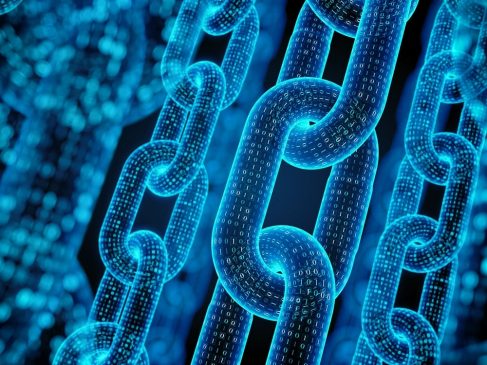Blockchain can disrupt the traditional banking industry, enabling new business models, and making the traditional financial infrastructure more efficient. Decentralized financial networks are based on smart contracts and P2P services which replace banks as a trusted party. Systems and solutions like GEO Protocol have the potential to fully reshape the financial world by providing real-time transactions, ubiquity, and fairness.
Money lending is the core principle of any functioning economy. Decentralized credit networks which have recently seen a rapid increase in popularity promise easy and global access to credit and loans for businesses and the public by immediately connecting borrowers and lenders on the platform. Users of IOU credit networks can even take advantage of interest-free loans and zero fees.
What Is Decentralized Lending?
P2P lending is how loans and corresponding payments were handled in the past before the rise of banks. This system was based on interpersonal trust, but over time P2P lending was replaced by traditional bank loans where banks act as intermediaries and provide an extra layer of protection.
After the global financial crisis of 2008-2009 new laws and regulations were introduced to improve transparency and to democratize the funding process. The result was the rise of P2P platforms that directly connect investors with borrowers and are a new type of “sharing economy”. P2P platforms remove the middleman from the process and use technology to determine creditworthiness and other factors related to the borrower’s ability to properly pay back a debt. They offer more transparency, simplified procedures, and better interest rate deals for both borrower and lender. This P2P model has proven to be successful and according to Statista, the global P2P lending market is expected to reach $1 trillion in the near future.
Advantages and Challenges of Blockchain-based Decentralized Credit Networks
Bank loans can give businesses access to capital which boosts economic growth. But the modern financial system is rife with problems that open the door to fraud and other crime and add costs which consumers ultimately have to pay. Why is the traditional financial system so inefficient? Being centralized, it is resistant to change and vulnerable to malware attacks and system failures. Today’s financial system operates through a limited number of powerful intermediaries who make money by providing services that can be easily delegated to software.
Enter Blockchain
Blockchain is built on a distributed ledger that runs on millions of devices so it is decentralized by design. It makes it possible to transfer ownership of money, bonds, equities, and virtually all other kinds of assets from one person to another securely, privately, without the need for an intermediary because the trust is established not by governments and banks but by network consensus protocols, cryptography, code, and collaboration. The key features of blockchain-based financial services are:
- Permissionless: Any person can access decentralized financial networks using the internet and no one can be denied service based on who they are, where they live, and what their income level is.
- Trustless: People don’t have to rely on a central party to ensure the validity of transactions.
- Censorship Resistant: At some later point in time, no central party can deem validated transactions invalid.
- Programmable: Using plug and play architecture, it is possible to create financial services at a low cost.
- Transparent: Public blockchains are fully transparent.
Decentralized Lending on Blockchain
Conventional lending is limited to locations where regular banks operate. This model is unfair because more than 2 billion people who live in poor countries have no access to finance. Decentralized lending solutions on blockchain are based on the timeless P2P model which makes the entire process seamless. They offer a cheaper and more secure way of making personal loans and give people equal access to the global lending market. With a decentralized credit network, everyone can get access to a loan if they have an internet-connected device.
All information about transactions is open for audits and a credit rating can be assigned to every address. Anyone can see the details about transactions of a specific address and analyze them. If a loan provider notices some suspicious or unusual activity, they can simply withdraw from offering a loan. Decentralized lending is still in its infancy and only time will tell if it will become a global system that gives all people equal access to a worldwide lending market. These systems are closely related to determining creditworthiness, establishing and verifying identities, and enforcing KYC rules.
IOU Credit Networks
The IOU credit networks model is based on transitive trust or credit between permissionless users. First, users express trust and strategically decide how much credit they are willing to extend to one another. Users who don’t directly trust each other can provide transactions by exchanging IOUs along the chain of trustlines in the network. Today there are several such solutions. Ripple and its fork, Stellar allows users to create and exchange own IOUs. While in Ripple, which is more centralized, each participant can issue and freeze its own asset, in Stellar special entities (anchors) are used. Sometimes possibility to create new IOUs by your own leads to existing few similar assets like many bitcoins issued by different Anchors in Stellar. There is an alternative to these projects − the GEO Protocol − a decentralized P2P value exchange network of mutual trust.
GEO Protocol
A unique feature of the GEO Protocol is that it is not based on a common ledger and is blockchain agnostic. That allows it to connect various blockchains, as well as non-blockchain-based assets. Transactions are performed by local off-chain consensus of the participating nodes only. All data is stored by the nodes, between which composite channels (a combination of state channels and trustlines) are installed.
A GEO node is so lightweight it can be installed and run even on an ordinary cell phone, turning it into a personal financial hub. There is no network fee for conducting transactions on the GEO network. Due to its flexible infrastructure, GEO Protocol can be used as a highly efficient trustless payment network layer for existing blockchain systems and to simplify payments in fiat money through a network of distributed trust. That enables the creation of a de-facto decentralized credit network between GEO network participants.
By default, loans on the network are free (provided particular participants trust each other, just as you would when giving a small loan to a friend). But GEO Protocol also allows for the creation of third-party dApps, where any functionality can be implemented including the creation of commercially motivated decentralized credit networks.
Conclusion
P2P lending is an age-old practice that was traditionally associated with high risk and extreme locality. Today, this model is being successfully digitized and delocalized and blockchain technologies are building additional trust and transparency on top of existing P2P lending models. Decentralized credit networks on blockchain ensure global access to loans with competitive interest rates for individual borrowers and businesses by connecting them directly with willing lenders.




